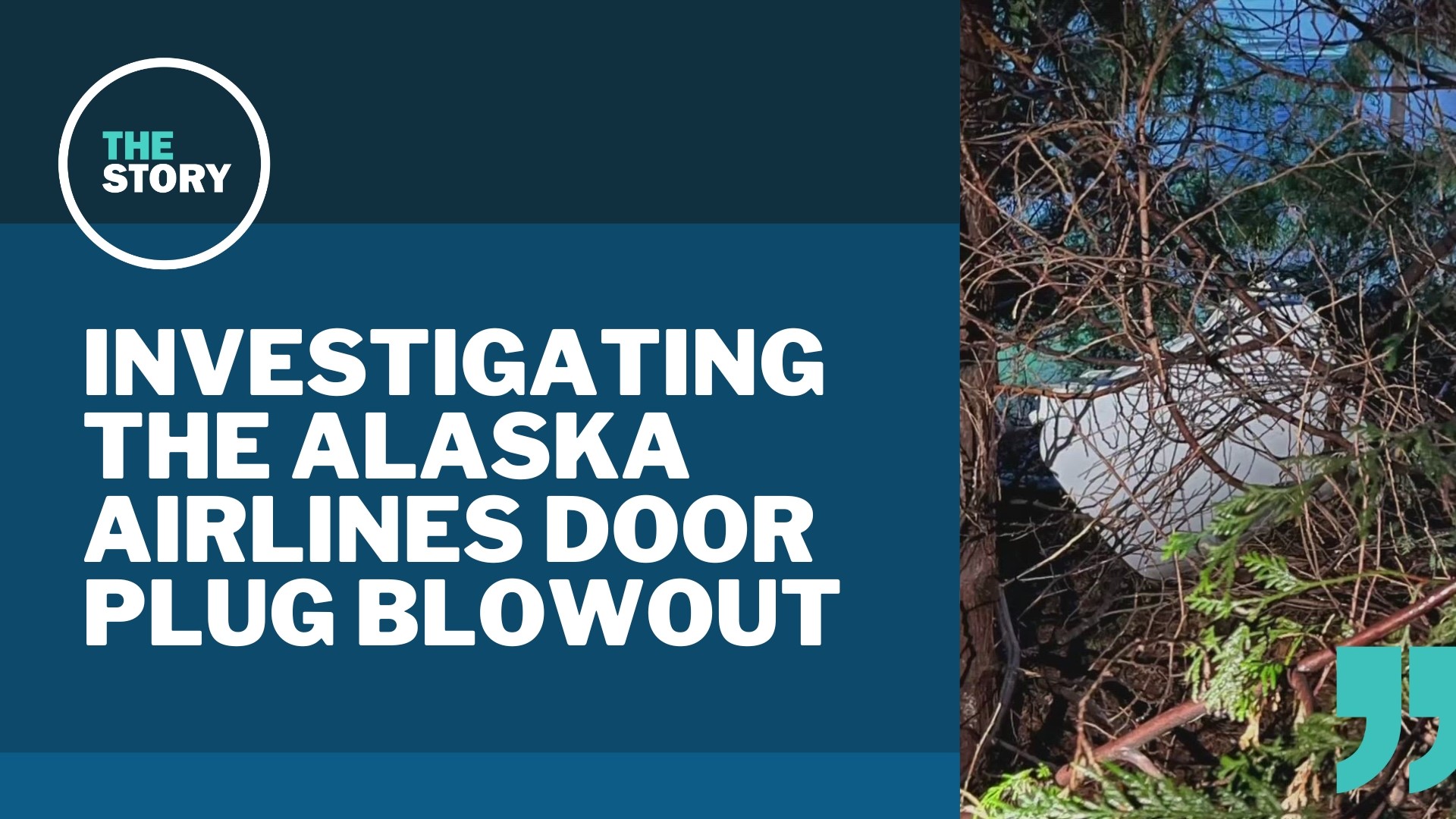Federal officials are investigating whether Boeing failed to make sure a panel that blew off a jetliner in midflight last week was was safe and manufactured to meet the design that regulators approved.
The Federal Aviation Administration said Thursday that the investigation is focusing on plugs used to fill spots for extra exits when those doors are not required on Boeing 737 Max 9 jetliners. Boeing said Thursday it would cooperate with the investigation.
One of two plugs that blew off an Alaska Airlines Max 9, leaving a hole in the plane. It was found near Portland, Oregon, and will be be examined in a government laboratory.
"This incident should have never happened and it cannot happen again," the FAA said in a statement. "Boeing's manufacturing practices need to comply with the high safety standards they're legally accountable to meet."
The FAA notified Boeing of the investigation in a letter dated Wednesday.
"After the incident, the FAA was notified of additional discrepancies on other Boeing 737-9 airplanes," an FAA official wrote. Alaska and United Airlines reported finding loose bolts on door plugs that they inspected in some of their other Max 9 jets.
The FAA asked Boeing to respond within 10 business days and tell the agency "the root cause" of the problem with the door plug and steps the company is taking to prevent a recurrence.
“We will cooperate fully and transparently with the FAA and the NTSB (National Transportation Safety Board) on their investigations," said Boeing, which is headquartered in Arlington, Virginia.
Earlier this week, Boeing CEO David Calhoun called the incident “a quality escape.” He told employees that the company was “acknowledging our mistake ... and that this event can never happen again.”
The door plugs are installed by Boeing supplier Spirit AeroSystems, but investigators have not said which company’s employees last worked on the plug on the Alaska plane that suffered the blowout.
The FAA has grounded Max 9 jets, including all 65 operated by Alaska and 79 used by United Airlines until Boeing can develop inspection guidelines and planes can be examined. Alaska has canceled all flights by Max 9s through Saturday.
NTSB investigators said this week they have not been able to find four bolts that are used to help secure the 63-pound door plug. They are not sure whether the bolts were there before the plane took off.
Despite a hole in the side of the plane, pilots were able to return to Portland and make an emergency landing. No serious injuries were reported.
A physics teacher in Cedar Hills, Oregon, found the missing door plug in his backyard two days later. It will be be examined in the NTSB laboratory in Washington, D.C.
The FAA's move to investigate Boeing comes as the agency is again under scrutiny for its oversight of the aircraft maker. Members of Congress have in the past accused the FAA of being too cozy with Boeing.
Sen. Maria Cantwell, D-Wash., chair of the Senate committee that oversees FAA, asked the agency to detail its oversight of the company.
"Recent accidents and incidents — including the expelled door plug on Alaska Airlines flight 1282 — call into question Boeing's quality control," Cantwell said in a letter to FAA Administrator Mike Whitaker. "In short, it appears that FAA's oversight processes have not been effective in ensuring that Boeing produces airplanes that are in condition for safe operation, as required by law and by FAA regulations."
The incident on the Alaska plane is the latest in a string of setbacks for Boeing that began in 2018, with the first of two crashes of Max 8 planes that killed a total of 346 people.
Various manufacturing flaws have at times held up deliveries of Max jets and a larger plane, the 787. Last month, the company asked airlines to inspect their Max jets for a loose bolt in the rudder-control system.
Download the KGW News app: Download for iPhone here | Download for Android here
Stream newscasts for free on KGW+ on Roku and Amazon Fire: How to add app to your device here
See a typo in this article? Email web@kgw.com for corrections

